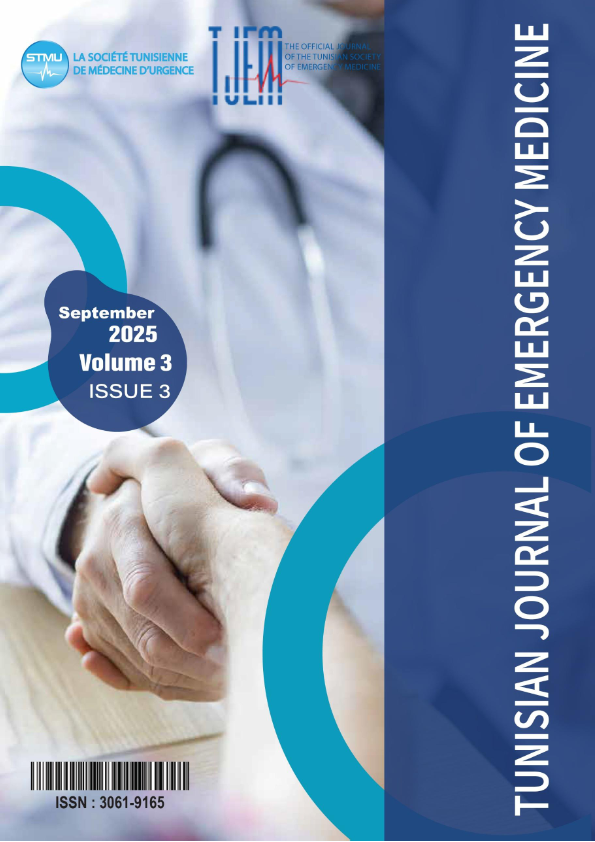Chest computed tomography finding in organizing pneumonia
- Authors
-
-
Wiem Feki
Radiology Department, Hedi Chaker University Hospital, University of Sfax, Tunisia -
Fatma Hammami
Infectious Diseases Department, Hedi Chaker University Hospital, University of Sfax, Tunisia -
Amina Kammoun
Radiology Department, Hedi Chaker University Hospital, University of Sfax, Tunisia -
Makram Koubaa
Infectious Diseases Department, Hedi Chaker University Hospital, University of Sfax, Tunisia -
Zaineb Mnif
Radiology Department, Hedi Chaker University Hospital, University of Sfax, Tunisia
-
- Keywords:
- Organizing pneumonia, Computed Tomography, Lung diseases, Diagnostic imaging
- Abstract
-
Background: Organizing pneumonia (OP) is a non-specific clinicopathological entity characterized by intra-alveolar buds of granulation tissue consisting of fibroblasts and connective tissue. OP is often secondary to infections, drug reactions, autoimmune diseases, or radiation therapy. Chest computed tomography (CT) is pivotal in the evaluation of suspected OP, often demonstrating characteristic findings. The aim of our study was to illustrate major imaging characteristics and patterns of OP.
Methods: We conducted a prospective study including all patients hospitalized in the infectious disease department for OP between 2018 and 2024. The diagnosis of OP was based on histopathology (lung biopsy).
Results: We encountered 35 cases of OP, including 19 women and 16 men. The mean age of patients was 76±18 years. Chest X ray showed multiple alveolar opacities, which were often migratory, in 20 cases, an heterogeneous excavated nodule in one case and an invasive alveolar opacity in 14 cases. The thoracic CT scan showed multifocal parenchymal condensations in 34% of the cases, single or multiple nodules in 11% of the cases and “reversed halo sign” in 25% the cases. Arciform condensations (40%), crazy paving (3%) and fibrosis (6%) were reported. The migratory aspect of the lesions and the regression under corticotherapy were very specific and present in 49% of the cases.
Conclusion: Organizing pneumonia is a heterogeneous condition with diverse clinical and imaging presentations. Chest CT plays a crucial role in detecting typical radiological features that aid in diagnosis. Recognizing these imaging patterns, along with clinical correlation, can facilitate early diagnosis and appropriate management, improving patient outcomes.
- Downloads
- Published
- 30-09-2025
- Section
- Retrospective or cross-sectional study
- License
-
Copyright (c) 2025 Tunisian Journal of Emergency Medicine

This work is licensed under a Creative Commons Attribution-NonCommercial-ShareAlike 4.0 International License.


